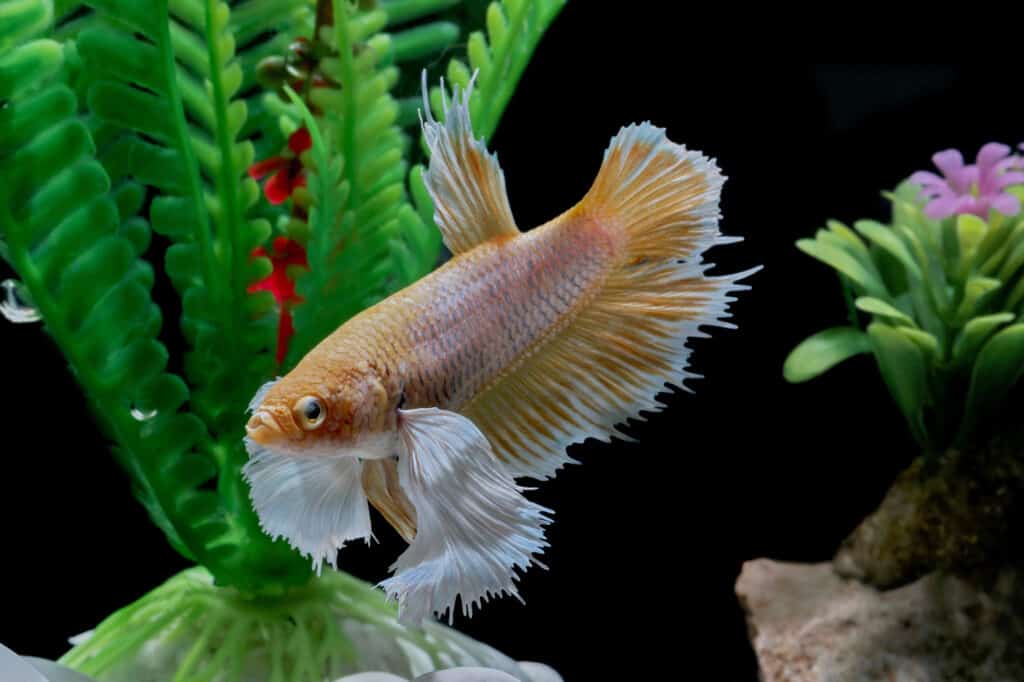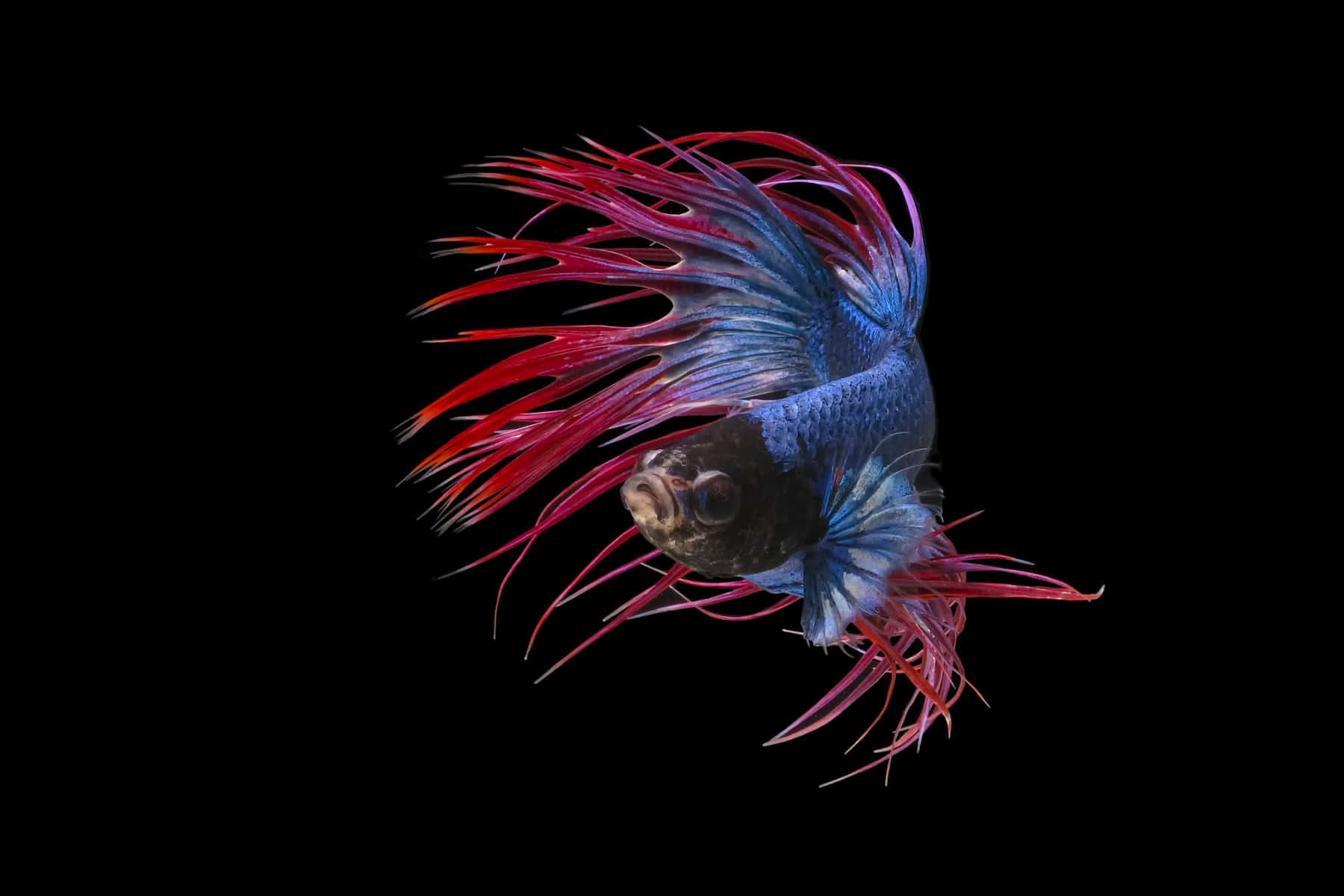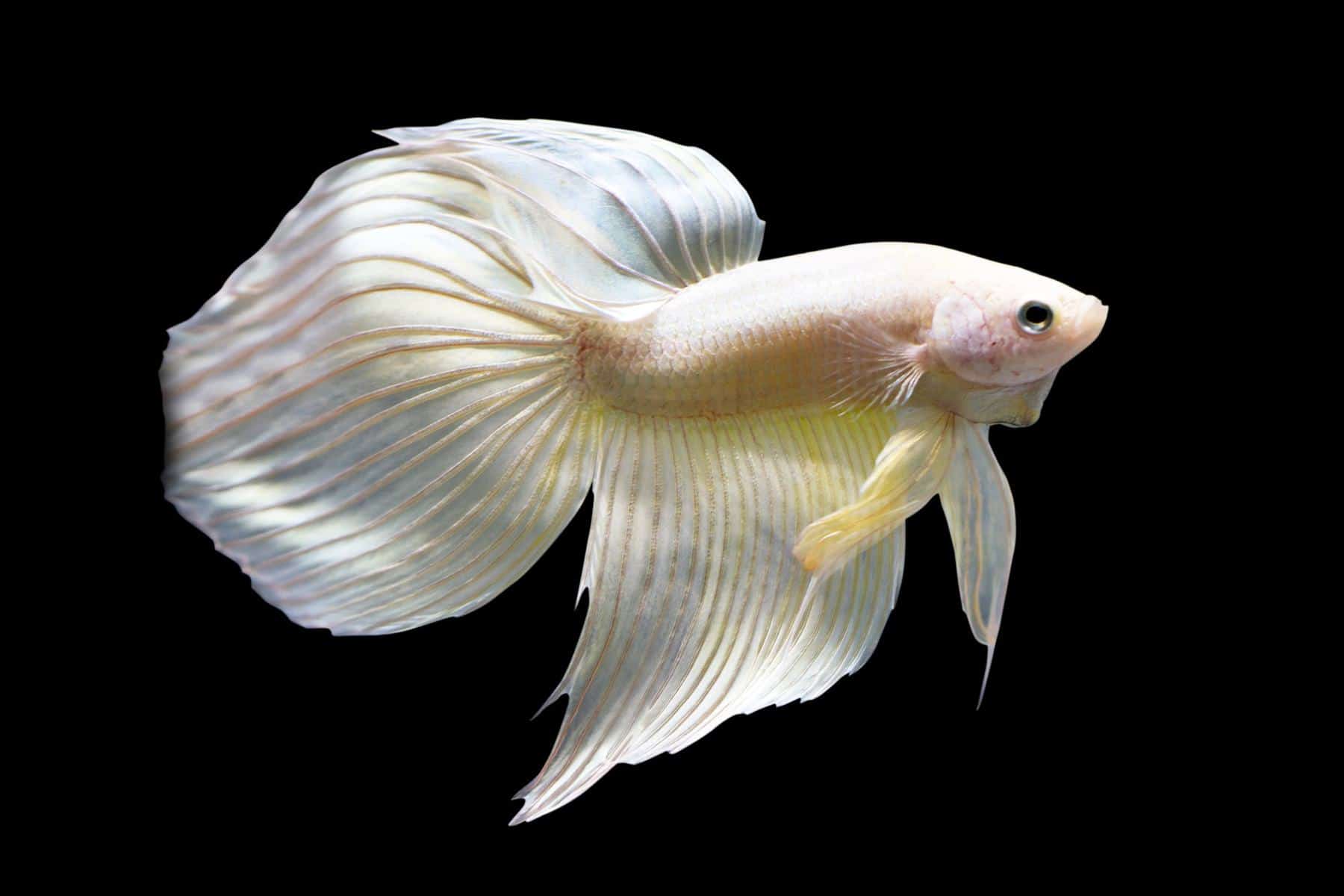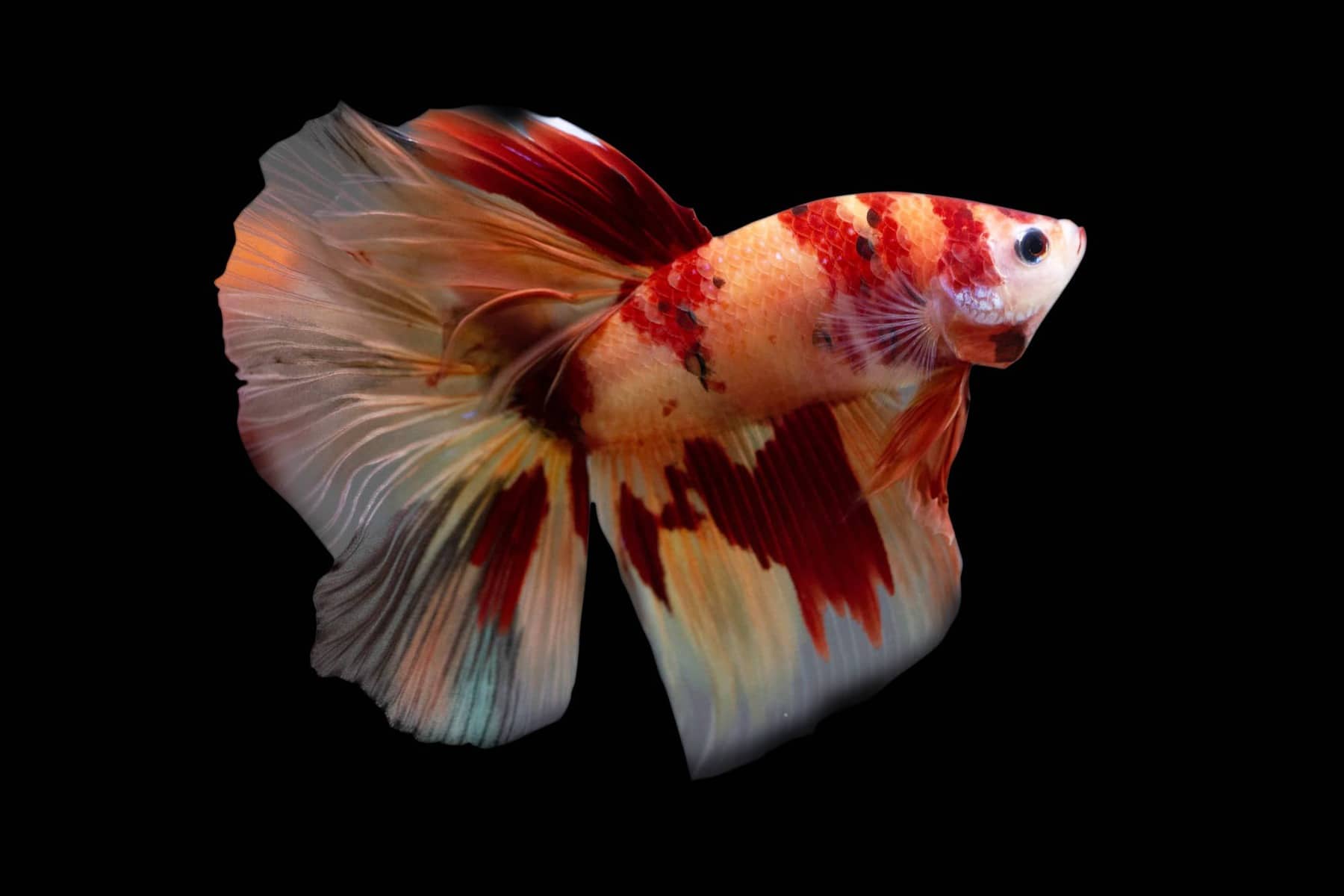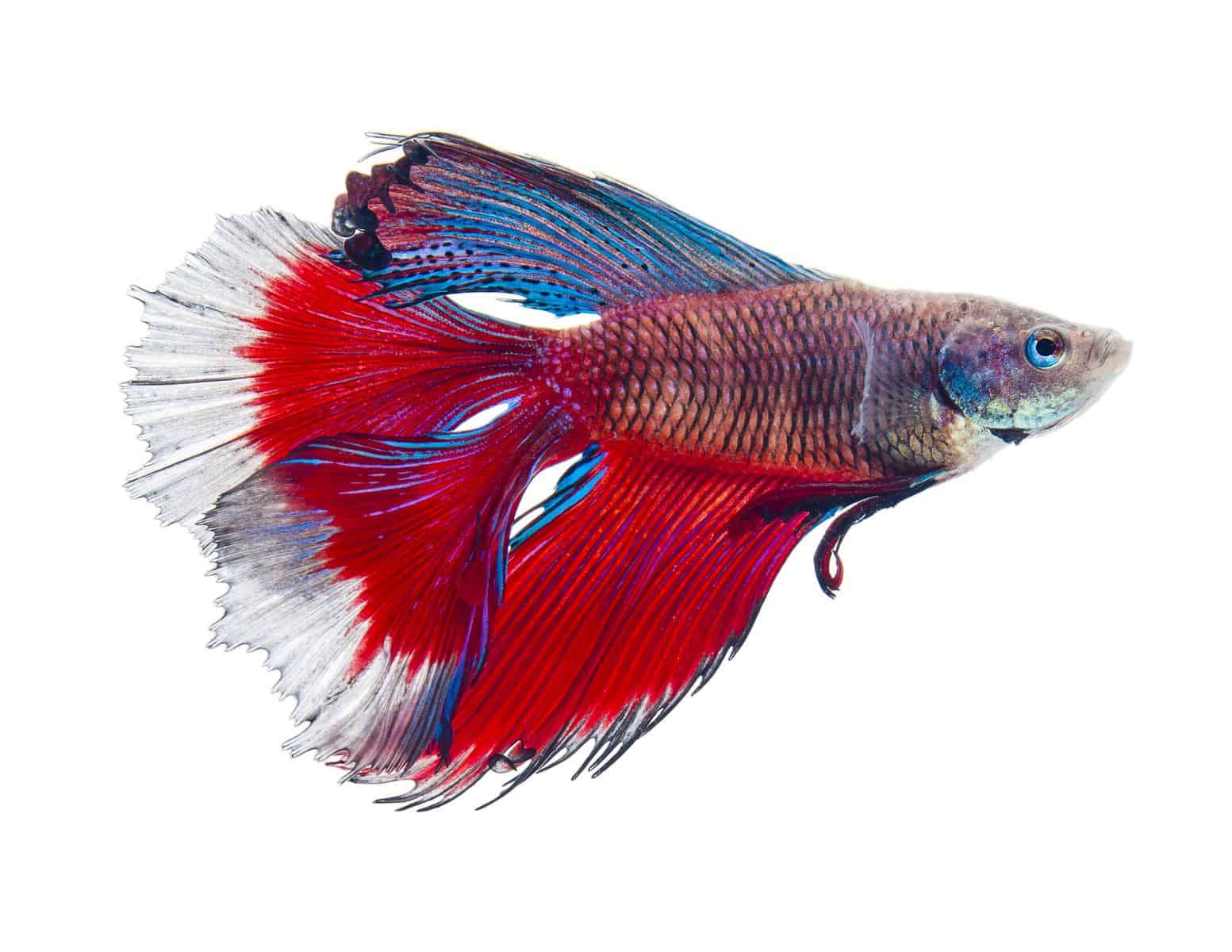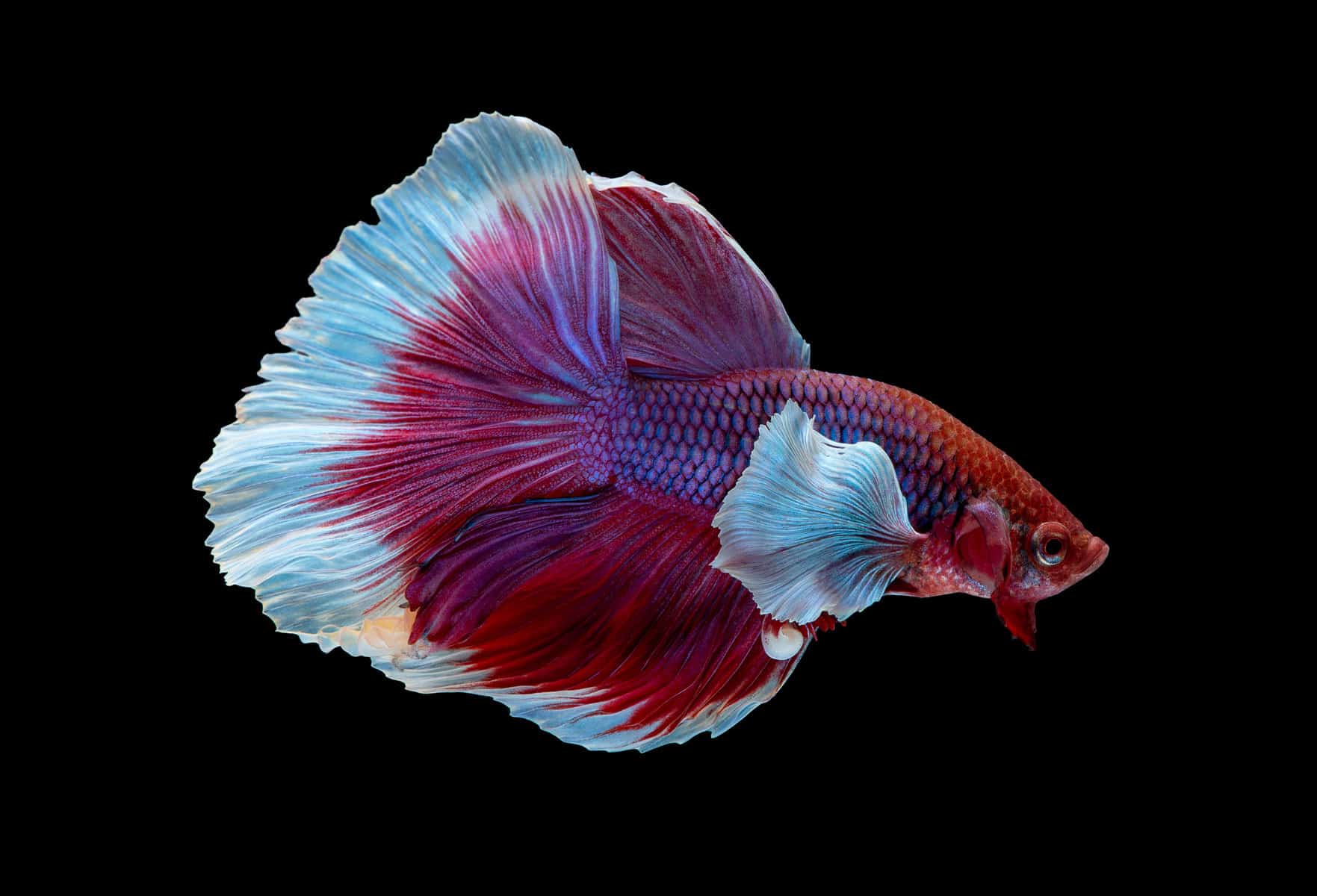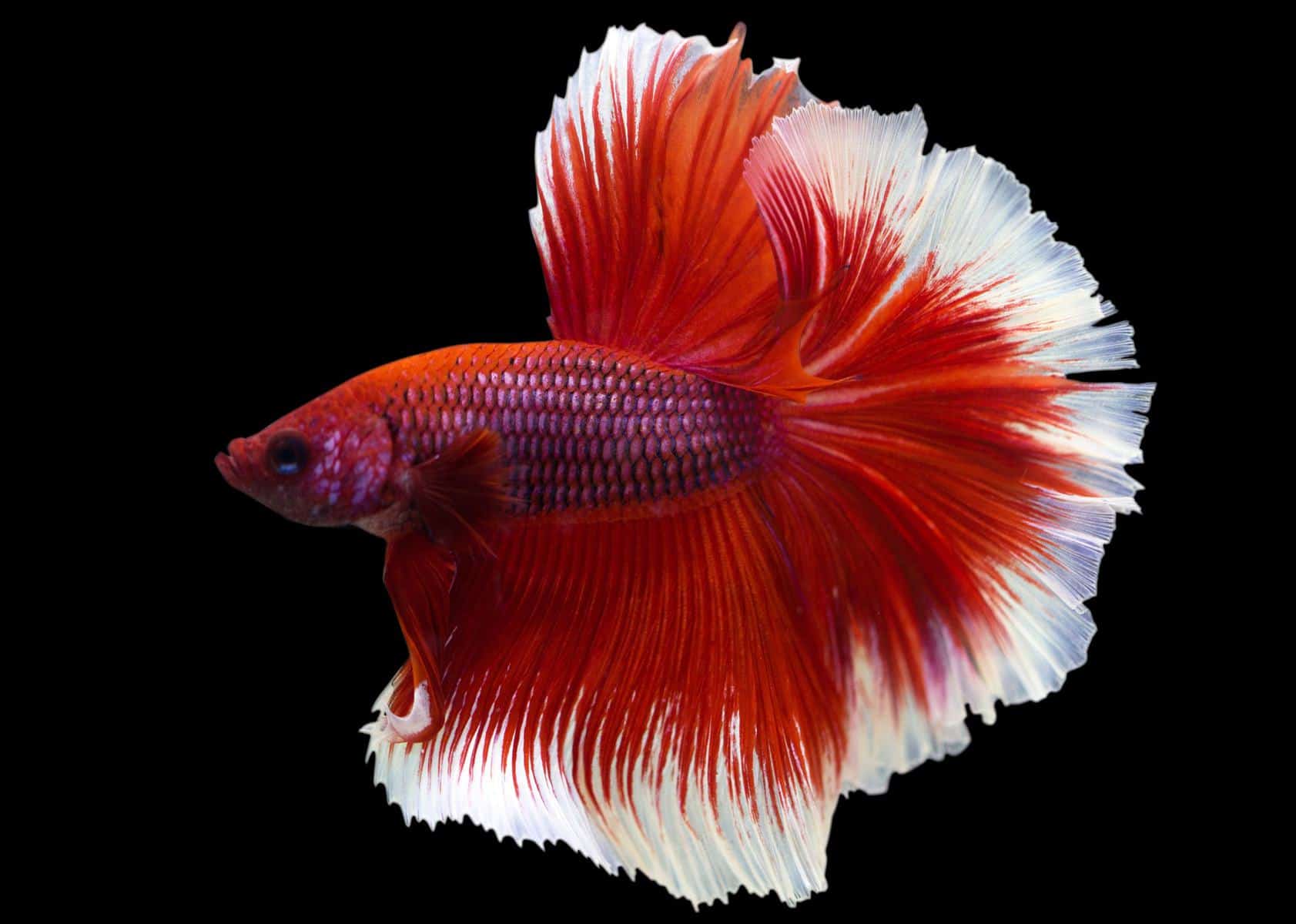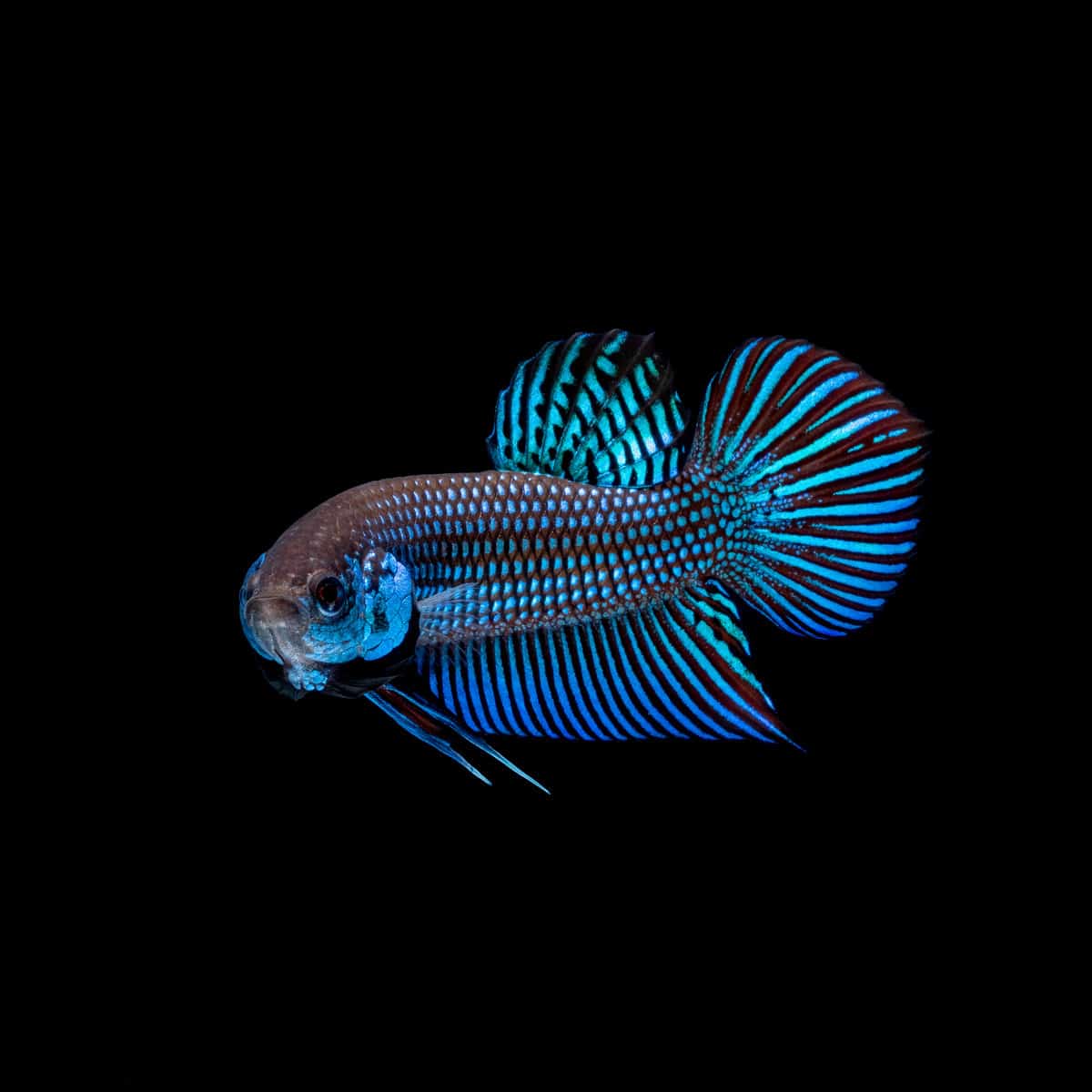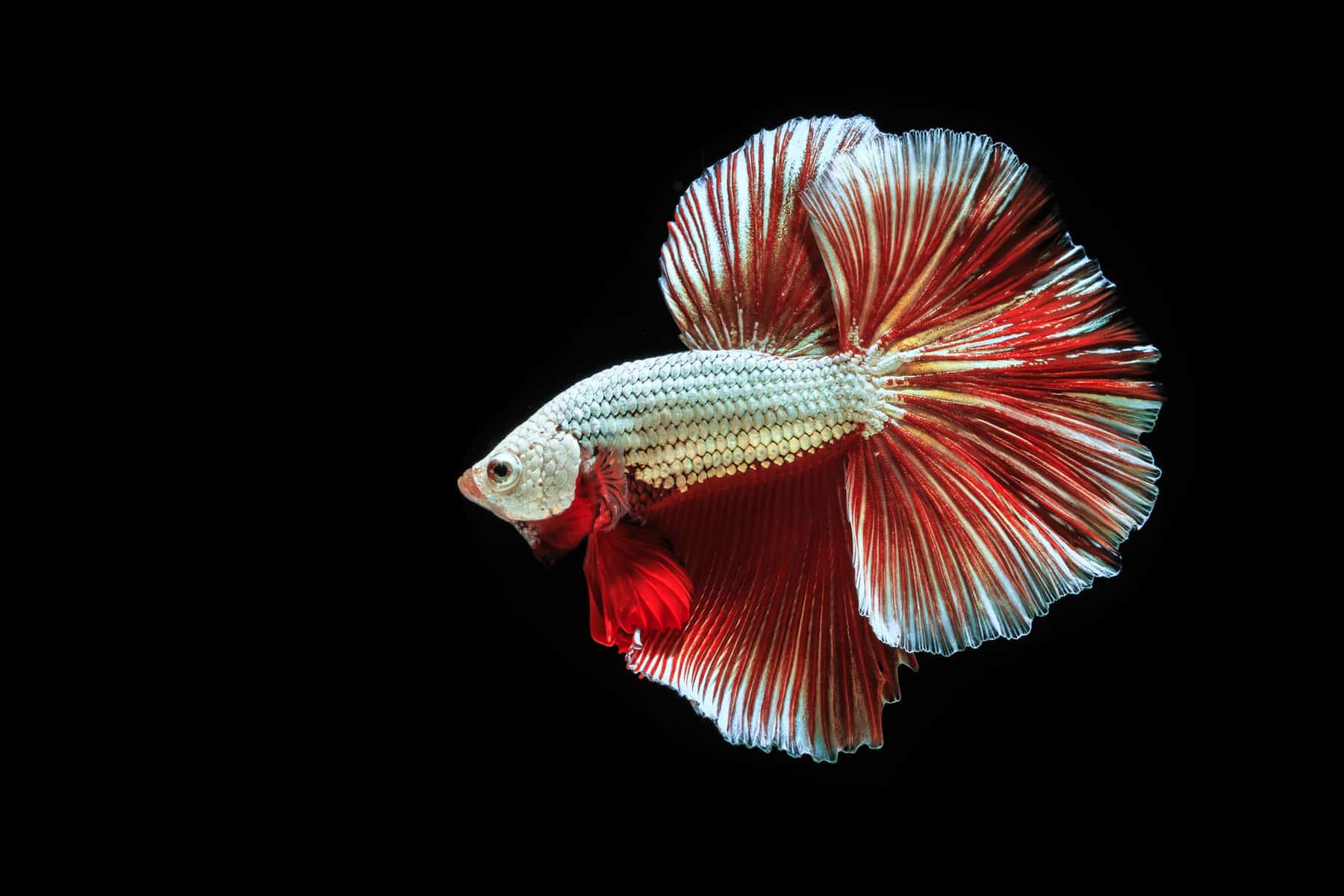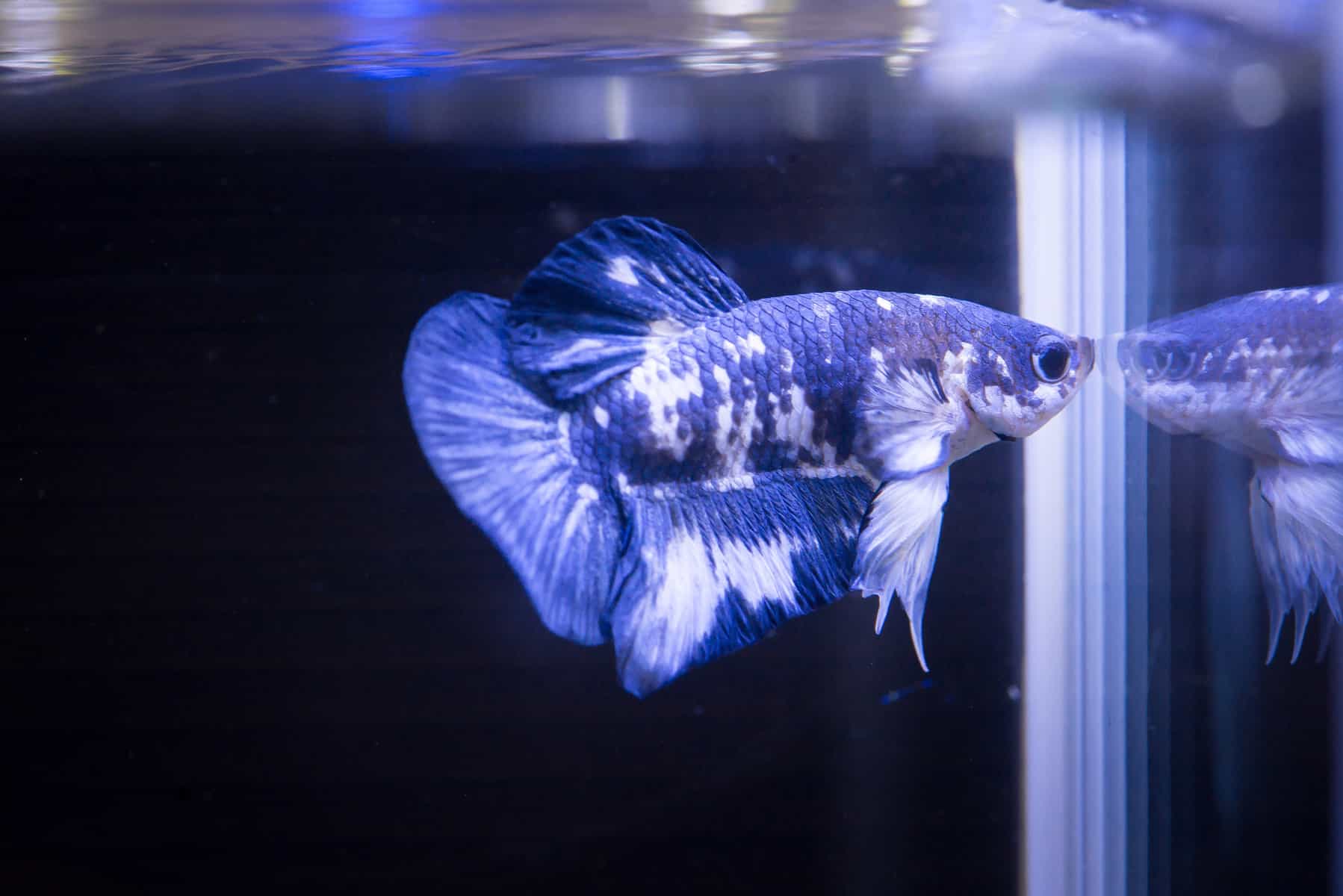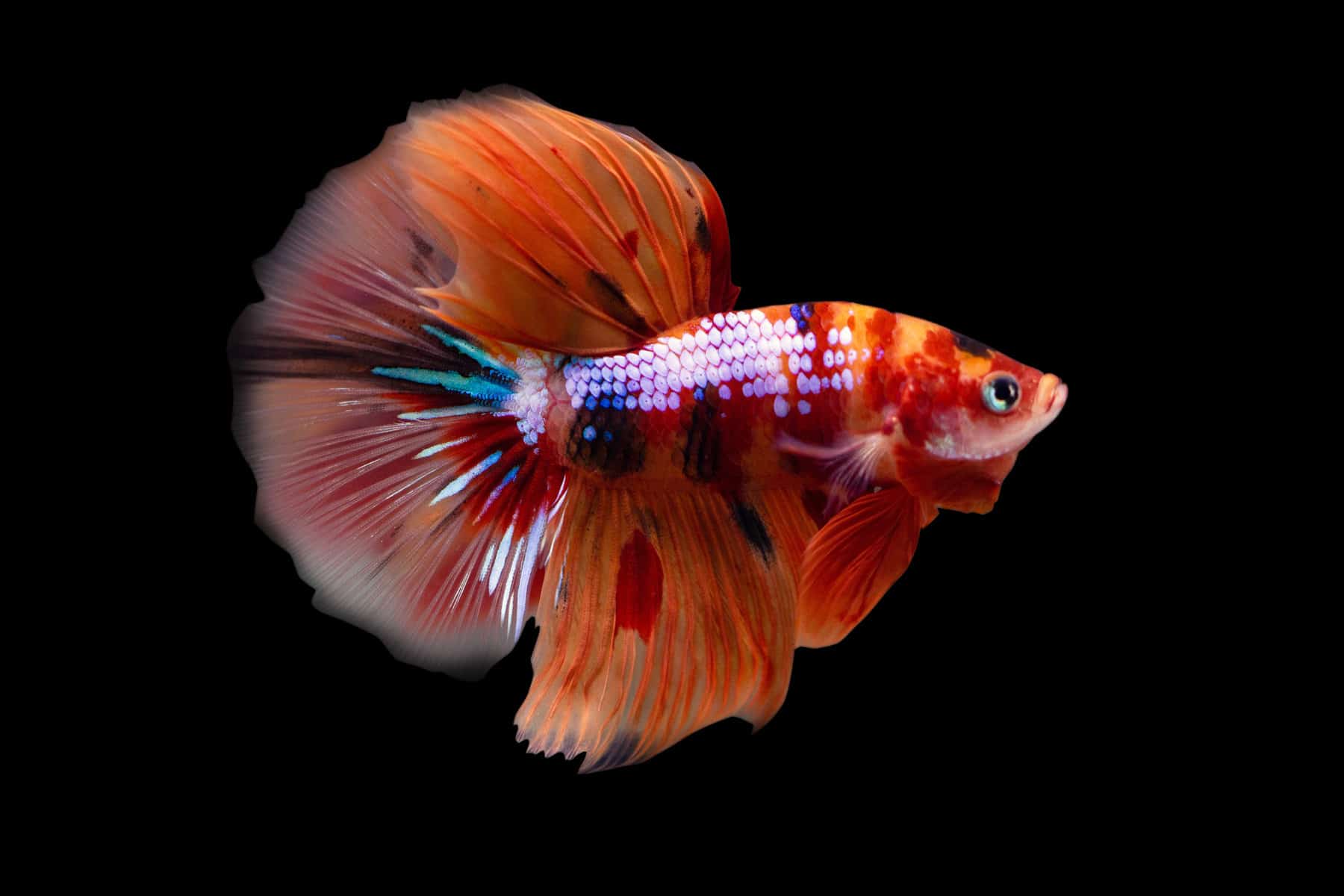Are you confused about which type of betta fish is right for you? I know I was when I first started looking for a betta to add to my tank. With so many different types and colors of bettas available, it can be tough to decide which one is the best fit for your home aquarium.
Fortunately, there are a few key things to consider when choosing a betta fish, including size, temperament, and personality. So, I’ve compiled a list of the most common types of betta fish, along with some tips on how to pick the right one for your home.
In this guide, I’ll break down the different types of betta fish into three main categories: tail types, color, and pattern. Let’s take a closer look at each of these categories!
Tail Types
Bettas are often classified by the unique shape and colors of their tails. From short and spiky to large and majestic, you will find all kinds of tail variations full of striking colors. Some of the most common tail types include:
Crowntail Betta
The crowntail was first bred by Ahmad Yusuf in Indonesia around 25 years ago and has been a favorite among aquarists ever since.
If the webbing on this species of fish’s tail reaches more than 2/3 up, then it is classified as a combtail betta. Otherwise, its fins give it a long, spikey crown appearance.
In contrast to the males’ colorful long fins and tails, females usually have lighter colors and shorter tails. Consequently, they don’t look as majestic overall.
Characteristics
- Color: Multiple colors
- Fins & tails: Webbing between rays and long spikes on dorsal, caudal, and anal fins
- Typical patterns: Full mask, grizzle, solid, butterfly, dragon scale
- Behavior: A little aggressive
Veiltail Betta
The male of this tail variation has a long, flowing downwards swooping tail. It comes in many different color variations and the overall appearance is quite remarkable.
If you’re interested in breeding veiltail betta fish, then you should learn that this is a dominant tail type. In other words, it’s simpler to breed them than other variations.
Additionally, female veiltails usually don’t have any of the remarkable characteristics of males. However, they can sometimes boast bright colors too. Generally speaking though, females tend to have lighter colorations and shorter fins and tails.
Characteristics
- Color: Multiple colors
- Fins & tails: Long flowing fins with a swooping tail. Large anal and dorsal fins
- Typical patterns: Butterfly, dragon scale, piebald, full mask, solid
- Behavior: Less aggressive
Plakat Betta
Unlike other betta fish, plakat bettas have short and round tails. Also, their fins are quite short when compared to other variations. Even so, the male shows amazing colors.
The plakat betta is the original form of fighting fish that were popularized in Thailand. The name plakat derives from the Thai word “plakad”, which literally means fighting fish. These fish were commonly used and bred for illegal fighter-fish gambling matches.
Characteristics
- Color: Multiple colors
- Fins & tails: Short tail with minimally ornate fins
- Typical patterns: Marble, koi, solid, butterfly, dragon scale
- Behavior: Extremely aggressive
Halfmoon Betta
The name “halfmoon betta” comes from the distinct shape of their tails, which are large and round like a half-moon. The only place you’ll find this type of fish is in captivity, they don’t exist naturally in the wild.
Amongst betta experts, halfmoon bettas are commonly bred to exhibit in shows. First bred in the 1980s, it didn’t take long for them to become internationally famous after reaching Europe.
Characteristics
- Color: Multiple colors
- Fins & tails: Flowing 180° tail with overlapping anal and dorsal fins
- Typical patterns: Butterfly pattern, dragon scale, solid
- Behavior: More aggressive than veiltails
Double Tail Betta
The Double Tail is recognizable by its two tails, which are separated from the base. The dorsal fin on this variation is usually larger and longer, while the body is shorter.
In fact, this gene is present in all bettas, regardless of tail shape or size. For example, single-tail bettas usually have double-tail characteristics, like more rays in their dorsal fins. This gives them a richer appearance overall.
Characteristics
- Color: Available in all colors
- Fins & tails: Two noticeable caudal fins, separated at the base
- Typical patterns: Piebald, bi-color, solid, butterfly
- Behavior: Typically slightly aggressive
Elephant Ear Betta/Dumbo Betta
Elephant ear bettas, more commonly known as dumbo bettas, got their nickname from their unique pectoral fins. These fins are large and round, resembling the ears of an elephant. Also, they come in a variety of colors, but they are most well-known for their brilliant striking colorations.
In the wild, these creatures are drabber, with colors ranging from dark green to grey and brown. However, in the aquarium trade, brighter shades like blue, turquoise, red, and yellow are seen more often.
Characteristics
- Color: Multiple colors
- Fins & tails: Ruffled pectoral fins with Half-moon betta tails
- Typical patterns: Solid, dragon scale, piebald, butterfly, grizzle
- Behavior: Slightly aggressive
Delta Tail Betta
As their name suggests, delta tail bettas are known for their distinctive triangular tails. The tail gradually becomes thinner near the body and then fans out at the edges, similar to the triangular shape of the Greek letter.
Also, the Super Delta variation is an extreme 180-degree flare. Usually, the spread of a normal delta tail is much smaller in comparison. In addition, the tail edges are usually uniform without any fanned-out feathers or crowing.
Characteristics
- Color: Multiple colors
- Fins & tails: Caudal fins usually flare out, forming a triangle
- Typical patterns: Solid, dragon scale, full mask, bi-color, grizzle
- Behavior: Aggression subjective to fish’s ancestry
Rosetail Betta
The rosetail betta is a half-moon variation where the caudal fin’s total spread is larger than 180°.
However, the most notable feature of this fish is its particularly branchy tail rays. This branching gives the fish a striking look, making the caudal fin appear like a rose.
If the tail becomes excessively branchy with a very ruffled appearance, it’s considered a feathertail.
Characteristics
- Color: Available in all colors
- Fins & tails: Tails with extra rays and thick ruffled edges
- Typical patterns: Solid, butterfly, bi-color, dragon scale
- Behavior: Aggressive
Feathertail Betta
Feathertail bettas have large, flowing fins that are very similar to those of rose tail bettas. But rather than being half-moon shaped, their tails and fins both come to blunt points, giving them a much sought-after feathery appearance.
Because bettas of this breed tend to have broken rays, ragged fins, and be prone to tail biting, their lifespan is quite short. Thus, if you’re looking for long-term companionship, these fish may not be the best choice.
Characteristics
- Color: Multiple colors
- Fins & tails: Ruffled dorsal, anal, and caudal fins
- Typical patterns: Dragon scale, solid, butterfly, full mask, grizzle, bi-color
- Behavior: Fairly aggressive
Round Tail Betta
Most pet stores will have round-tail bettas, as they are extremely popular among fish enthusiasts. As the name suggests, their tail is completely circular with no straight edges.
Also, these fish are available in a wide variety of colors and patterns, so you can choose the one that best suits your taste. Plus, they are relatively peaceful, making them a good choice if you’re looking for a low-maintenance pet.
Characteristics
- Color: Multiple vibrant colors
- Fins & tails: Single tail with rounded edges
- Typical patterns: Solid, butterfly, dragon scale
- Behavior: Less aggressive
Spade Tail Betta
Spade tails bettas are a more complicated variation of veiltail bettas. These fish have longtails that round out, much like what you would see on female and juvenile bettas.
These pals get their name from the spade-shaped point on their caudal fin, which is similar to playing cards. The tail spread should be proportional and even on both sides, with a slight curve at the back. Although these bettas are now quite rare, they were once very popular in the late 1990s to early 2000s.
Characteristics
- Color: Available in all colors
- Fins & tails: Tail flares out curving to a point with large dorsal and anal fins
- Typical patterns: Dragon scale, full mask, bi-color, solid, piebald
- Behavior: Less aggressive
Over-Halfmoon Betta
The over-halfmoon betta is a more extreme variant of the halfmoon, where the tail’s spread exceeds 180 degrees around the fish’s body.
While over-halfmoon bettas are lovely fish, they aren’t strong swimmers. So when choosing a tank for your fish pick a shallow one so the fish can reach the surface to get food and air through its labyrinth organ.
Half-Sun Betta
The half-sun betta is a hybrid fish, created by crossbreeding crowntails and halfmoons. The half-sun has a wide caudal fin that extends more than 180 degrees around the body, with slight webbing and rays.
Colors
Betta fish come in a vast array of colors, patterns, and fins. Some have just one color on their bodies while others are mixed with many shades. While they most frequently are seen in black, white, electric blue, and translucent skin tones, octopuses can actually have any color of the rainbow.
Blue Betta Fish
While you might believe picking a blue betta fish is elementary, there are actually various hues of blue. The most conspicuous colors are steel blue (rather grayish which gives the fish a chilly coloration) and royal blue betta, which is a radiant and beautiful coloration with an iridescent bright blue.
Black Orchid Betta
The black orchid betta fish’s colors vary from black to dark purple or blue. These variations are then separated into three groups: melano, black lace, and metallic. The last group, metallic, is the most iridescent and has scales that look like copper with a tinge of translucence.
Red Betta Fish
The striking and full-bodied red color is the most popular among betta fish. However, sometimes this red can appear faint or washed out. If this happens, check their diet and water conditions as it may be indicative of a problem.
From plakat to veiltail bettas, this color is available in a number of different styles. If it’s not one of the primary colors, you may still be able to see it as a highlight across other fish’s fins or bodies.
Pink Betta Fish
The pink betta fish is difficult to spot since it almost looks transparent. Many people believe this fish is albino, but these bettas have a scarcity of color and you can see their flesh through their skin.
While a fuller pink color on the fish usually indicates a bright and rich pink body and fins, this is not always the case. More often than not, there are additional colors present such as red, purple, or white along the fins, tail, and body.
Rose Petal Betta
There is no definitive way to define a rose petal betta fish as they come in an electric light blue hue with numerous color variations. Also, they have a darker face than most other betta fish and are quite rare, making them even more sought-after by collectors.
Yellow Betta Fish
Yellow bettas have a rich body coloration that extends along their fins and tail. This fish can come in different yellow shading ranging from extremely light to very dark.
Also, soft yellows are found among this variety of fish which is why it’s commonly referred to as “non-red” since they share similar qualities but with a yellow hue.
White Betta Fish
At first glance, white betta fish might seem a little unassuming when compared to fish of other colors. However, if you select the right tail type, they can be quite majestic.
Depending on your preference, you can find a fish with the perfect coloring and tail type. For example, some people might consider a long white tail to be majestic.
Purple Betta Fish
Although it may be difficult to find a pure purple betta fish, you will often find them in rich violets or purple-blue hues. They might have other color variations such as copper and black.
Actually, a common trademark of these fish is having a purple body with fins or face being another color. Also, they come in all types of tail shapes and color patterns! In the end, it just comes down to finding the one that best suits your taste.
Green Betta Fish
Full green betta fish are not easy to come by. Most of the time, they appear turquoise. Usually, the green is hidden under a darker coloration, but if you shine a light against it, an iridescent green tone will become visible.
Also, bright and dark green variations do exist but are few and far between – and often considered quite valuable.
Mustard Gas Betta
Mustard gas betta fish are two-toned fish, with the body and fins being different colors. Usually, the body is dark blue or green.
Also, they got their name from their yellow-orange coloration and mustard hue that stands out against their darker body. Although both the chocolate and this variation share similar-colored fins, the body of the chocolate fish is brown.
Albino Betta Fish
Albino bettas are known for having zero pigmentation. The fins and scales of these fish are usually transparent, with a hint of red in the eyes. However, breeding albino bettas is difficult due to their low survival rate.
Clear/Cellophane Betta
The cellophane or clear betta fish usually has translucent scales that look whitish under specific lighting. If the fish is exceptionally translucent, you can almost catch a glimpse of its internal organs.
Depending on the breed, you’ll find colors that vary from nearly see-through to milkily white and opaque. The tint all over the body is usually white, with black pupils.
Patterns
The final way to sort betta fish is by the arrangement of their colors, which can be breathtaking. Some of the most popular patterns include:
Dragon Scale Betta
The dragon scale betta fish is a new pattern that has been bred through selective breeding. This type of fish is very popular for its bright, metallic coloration.
As their name implies, the scales on the body of this fish closely resemble those of a lizard or dragon. Usually, they have rich colors such as red with pale iridescent scales across their main bodies (often copper in color).
Butterfly Betta
The butterfly betta has a single, solid body color that reaches the fins and tail. The iridescent color then replaces it abruptly and typically covers the fins and tail completely – leaving them white or see-through.
Another way this fish pattern appears is when the body is one color, and then the inside of the fins and tail are another. Then they gradually become white or transparent around the edges.
Marble Betta
Marble bettas colors appear blotchy and irregular, often with a light pale solid body color with rich reds and blues creating a pattern. Also, the fins can display a marble-like pattern or solid, translucent coloration that will develop and change over time.
For example, one week the fish may appear one color, but the next week you might find they’ve changed to a different hue. However, as the fish ages, this ability to change colors will slow down.
Koi Betta
Koi betta fish is a popular variety of marble-type fish, carefully bred to resemble the beloved koi pond fish. However, this is not a species that you would find in the wild.
Over many years, aquarium hobbyists have bred this fish carefully to maintain its incredible characteristics and features. There is no one distinct coloration for this type of fish – they can vary significantly in their brightness, richness, and colors.
Bi-Colored Betta
Bettas with two colors on their body and fins are called bi-colored bettas. Depending on the fish species, the shades can be either punchy and vibrant or pale and muted.
Usually, the fins are dark-colored while the body is light-colored. However, in rare cases, you may find light fins with a dark body.
Cambodian Betta
The Cambodian betta’s only unique quality is its signature pale pink color. These fish stand out amongst other types of bettas because of their bright red fins contrasted against the pastel body. Although you can find them in different colors, they are mostly known for this particular coloring.
Mask Betta
Masked bettas have coloration that extends over their entire bodies, while half-masked bettas have two colors. Typically, a masked betta’s body will be one color and its head another, whereas a half-masked betta will have one color on one side of its head and another on the other side.
FAQs
Which Type of Betta Is the Most Aggressive?
Plakat betta fish, or short-finned bettas, are typically the most aggressive type of betta. These fish have a much shorter body length and larger tails than other types of bettas.
Also, they are extremely territorial and may become more aggressive toward their tank mates to protect their territory.
In addition to plakats, crown tail bettas are also fairly aggressive. These fish are constantly protecting their territory and aren’t afraid to attack other creatures.
Which Type of Betta Fish Is the Most Docile?
The betta imbellis is one of the less aggressive betta fish. They are docile and have calm personalities which makes them easy to keep with other mixed-sex groups in the same tank.
Another example of a peaceful species is the Brunei beauty betta. Lastly, veiltail bettas are also relatively tame and require less maintenance than other types.
What Is the Rarest Betta Color?
The most unique betta color is albino. It’s so rare that fish enthusiasts often have disagreements over its existence, similar to pure black bettas. Other than albino, purple and green bettas are quite difficult to find in their purest form.
